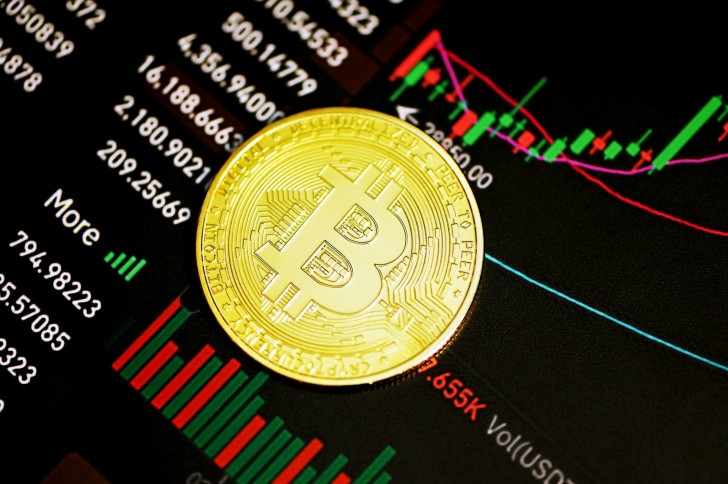This surge is not only reflected in prices but also in trading activity and on-chain data. Daily trading volumes on major exchanges have climbed sharply, while blockchain analytics show rising numbers of active addresses and transaction counts across both Bitcoin and Ethereum networks. Analysts interpret these signals as evidence that the rally is being supported by broad participation rather than a handful of speculative trades, indicating stronger foundations for continued growth.
Rallying Market Highlights
Bitcoin recently soared to a record high - around $124,000 - spurred by strong institutional adoption and rising corporate treasury allocations. At the same time, Ethereum broke through its 2021 peak, surpassing $4,900 in a breakout that analysts described as a clean multi‑year technical move. These surges come as whales shift substantial capital into ETH—about $450 million, signaling potential altcoin season underway.
Amid this bullish backdrop, Asia’s affluent investors are also directing crypto into portfolios. Family offices across the region are allocating portions—up to 5%—to digital assets, with regulatory clarity and past strong returns fueling the trend.
As prices surge, the conversation swiftly shifts to access and infrastructure, including how and where growing numbers of people can exchange crypto in Istanbul and other major cities of the world, reflecting increased demand for physical crypto exchange services in traditional financial hubs.
Institutional Flows Fueling Bitcoin
Institutional demand is emerging as a dominant force shaping Bitcoin’s trajectory. The launch of U.S. spot Bitcoin ETFs in 2024 triggered significant capital inflows - management assets in these ETFs reached over $65 billion by Q1 2025, with BlackRock’s iShares Bitcoin Trust alone holding $18 billion. Across institutional players, over 59% now allocate at least 10% of their portfolios to Bitcoin, leveraging it as a hedge and diversification tool.
Additionally, corporate treasuries are increasingly embracing BTC. Public firms like MicroStrategy—now called Strategy—have been massive accumulators, recently adding over 3,000 BTC and bringing their total holdings to more than 630,000 coins. This trend reflects a shift from passive investment to proactive treasury strategy.
For local users, these dynamics translate into greater demand to buy bitcoin in Istanbul and other financial hubs, whether to enter the market or diversify their portfolios as a way to protect capital from economic uncertainty.
Stablecoins and the USDT Flow
While Bitcoin and Ethereum capture headlines, stablecoins like USDT play an essential role in crypto’s expanding ecosystem. Pegged to the U.S. dollar, USDT offers stability amid volatility and serves as a primary vehicle for traders and businesses seeking quick value transfers.
Its massive adoption is reflected in volume and usage: Tether remains the most traded cryptocurrency globally, holding more than 50% market share among stablecoins.
This appetite for stability means that an increasing number of market participants - especially those in regions with volatile local currencies - are looking for ways to buy USDT in Istanbul, seeking convenient and reliable conversion processes to access the stability that this cryptocurrency offers.
Beyond trading, USDT is increasingly being used in cross-border commerce, remittances, and decentralized finance platforms. Its liquidity and near-instant settlement make it attractive for businesses and individuals alike, particularly in emerging markets where access to traditional banking services can be limited. This utility reinforces its position as a backbone of the crypto economy, ensuring that demand for stable and easily transferable assets like USDT will continue to grow.
Conclusion
The current cryptocurrency market surge is being fueled by a diverse set of buyers, each playing a role in shaping momentum. Institutional investors and public companies continue to allocate significant resources into Bitcoin, reinforcing its image as a long-term hedge and portfolio diversifier. At the same time, whales and high-net-worth investors are rotating capital into Ethereum and a range of altcoins, betting on the next wave of technological innovation and value creation within the sector.
This broadening of the buyer base signals that crypto is no longer a narrow, speculative niche but a growing pillar of global finance. From major institutions managing billions to individuals seeking stability in uncertain economies, the appetite for digital assets demonstrates resilience across market cycles. As Bitcoin, Ethereum, and USDT continue to anchor this ecosystem, the path forward suggests deeper integration of cryptocurrencies into mainstream financial infrastructure worldwide.
 Editorial staff
Editorial staff

 Editorial staff
Editorial staff


